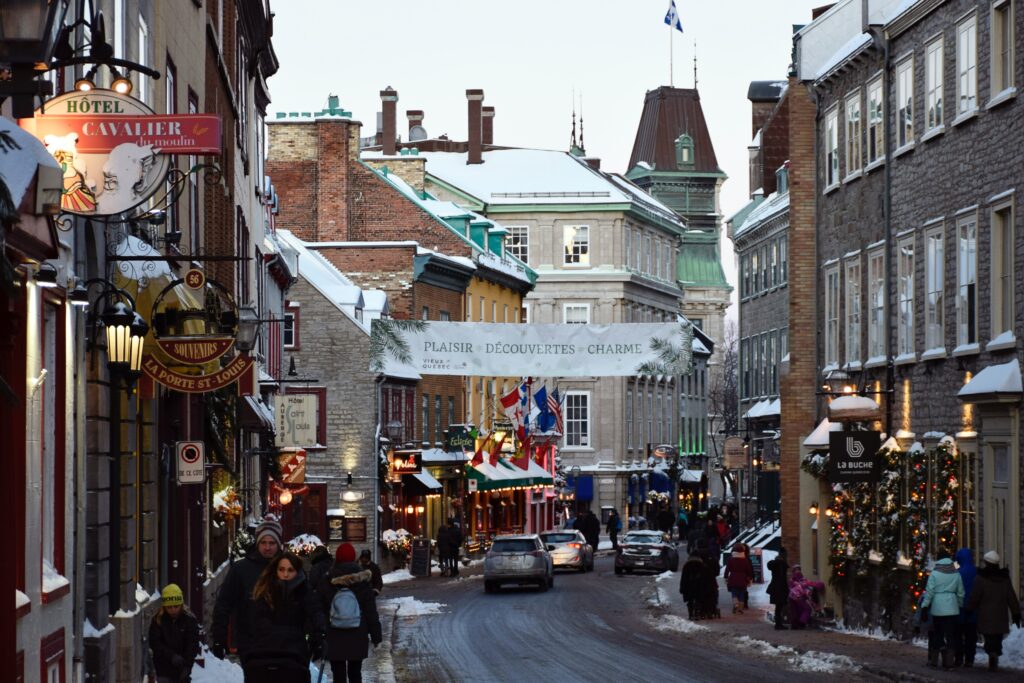It was an impressive setting made even more beautiful by the Christmas decorations added at the front of the church in preparation for the midnight mass the following evening. We were carrying our youngest child, four-month-old Matt; the other kids were walking along with us. As we reached the front of the church where workers were putting the final touches on the manger scene, one of them saw the baby in our arms and asked, “Could we use your baby tomorrow night for the midnight mass?” We laughed, politely declined the request, and continued our tour. Part of the humor for us was the idea of a Baptist missionary’s baby playing the central role at the basilica’s most important liturgical event of the year.
What we didn’t understand in those early days of learning a new language and culture is that le petit Jésus (the little Jesus) who is depicted in the manger isn’t the Jesus we encounter in the Scriptures.
Luke 2, probably the best known of the incarnation narratives, introduces us to that baby in the manger and he is not “little Jesus.”
And the angel said to them, “Fear not, for behold, I bring you good news of great joy that will be for all the people. For unto you is born this day in the city of David a Savior, who is Christ the Lord. And this will be a sign for you: you will find a baby wrapped in swaddling cloths and lying in a manger.” Luke 2:10-12
Notice how this baby is described. As the angels announce the birth of the newborn, a helpless baby boy totally dependent on his parents, he is identified as a Savior. The gospels further reveal the Father’s plan that Jesus, his one and only Son, would give his life to save people from their sins. Jesus, the Lamb of God, would become the perfect sacrifice, dying in our place so that he could take our sins.
The angels added that he is the Christ. The Old Testament name, Messiah, used 39 times, is translated as Christ. Jesus, this little baby in Bethlehem’s manger, is the Anointed One who was promised centuries earlier; he is the anticipated Deliverer.
The third description of the baby is Lord. This title is used hundreds of times in the New Testament when referring to Jesus. He is Master, he is Ruler, he is God. Far from being le petit Jésus, the Jesus introduced by the angelic choir is one who is worthy of our worship and praise, adoration and affection, trust and obedience.
Consider one more passage, this one a prophetic word given 700 years before the birth of Jesus. The language once again reminds us that we aren’t talking about le petit Jésus, a figurine in the nativity scene. As you read Isaiah 9:6-7, highlight the names and descriptions given of this “child who is born, this son who is given.”
For to us a child is born, to us a son is given; and the government shall be upon his shoulder,
and his name shall be called Wonderful Counselor, Mighty God, Everlasting Father, Prince of Peace. Of the increase of his government and of peace there will be no end, on the throne of David and over his kingdom, to establish it and to uphold it with justice and with righteousness from this time forth and forevermore. (Isaiah 9:6-7)
Let the truths of Isaiah 9:7 give hope: his government and his peace will have no end; his reign, which will be eternal, will be marked by justice and righteousness. The baby in the manger was never le petit Jésus. May our celebration this Christmas reflect the truths of “the Savior who is Christ the Lord.”
Christmas in Quebec
You can count on having a nostalgic white Christmas since the average snowfall is 10 feet per winter. All those idealized postcard images really do happen in Quebec: skating, sledding, tobogganing, sleigh rides, frosted windowpanes, fireplaces blazing, and walks in the snow through giant snowflakes (or blizzard-like conditions and -20˚F). And since Canada celebrates Thanksgiving in early October, Christmas decorations can go up on November 1.
One part of a French-Canadian Christmas celebration that was new for our family was the timing. Midnight mass on Christmas Eve is the centerpiece of the holiday. Families go to church together, which means that family traditions of opening presents, having a big meal, playing games, and singing all take place in the very early hours of Christmas Day.
While a turkey dinner might be prepared, there are other traditional dishes on the menu, such as Tourtière (meat pie) and Ragoût de boulettes de grand-mère (Grandma’s meatballs in gravy). The bûche de Noël (Christmas log) is the dessert of preference, with sugar pie a close second.
In Quebec, as in the rest of North America, Père Noël (Santa Claus) and the commercialized version of Christmas have overshadowed the true message of the arrival of the Savior.
Prayer Requests for Quebec:
- The church plant, Maison Coram Deo, that began when COVID-19 restrictions were being instituted, is once again able to meet. Pray for growth in 2023.
- New EveryEthne colleagues moved to Quebec City in June 2022. Pray for their family to continue adapting to life and ministry in Quebec.
- Credo Church has met in rented facilities since it was established. Pray that God will provide a permanent location in Quebec City in 2023.
- Pray that the EveryEthne team will build relationships with people that will lead to gospel conversations and to salvation.




